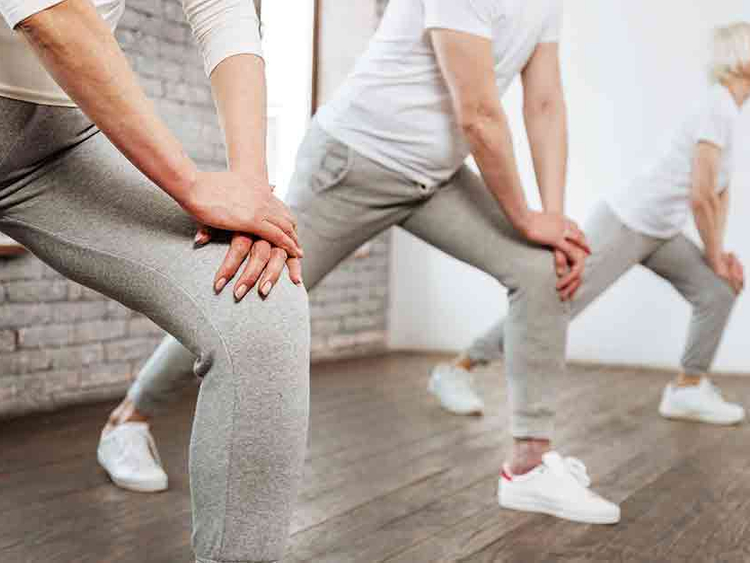The knees are the largest joints in the body. They’re also one of the most commonly reported areas of injury and pain. So put on the brakes before breaking into a sweat and consider whether or not your chosen workout has the potential to exacerbate prior injuries, especially if you’ve had knee problems in the past.
If you are looking to strengthen the muscles around your knees, Pilates is a great place to start. The base of the workout is high-intensity and low-impact. Make no mistake: Low-impact does not mean light workout; Pilates can involve some of the toughest training around.
Expect to see noticeable changes almost immediately. Because knee pain often comes from other imbalances in the body, Pilates can help to build symmetrical muscles while also increasing flexibility.
While many fitness experts advocate the power of squats, if you decide to engage in two- or one-legged lunges or squats, make sure to pay close attention to your body and how it reacts. If you feel even the slightest twinge of pain, do not push yourself. Ease back and nix that from your plan for now.
Pushing through the pain will hurt you immensely in the long run — and the same goes for running. Listen to what your body is telling you. Perhaps, running stresses your knee, but jogging on a rubber track works out all right.
The point is, do what feels good, and avoid any exercise that causes pain.
A great alternative to running is using an elliptical machine: a no-impact cardio workout in which you can cover long distances using both forward and backward motion.
Swimming laps is another great way to get your heart rate up without causing any harm to your body. You can begin to strengthen your hamstrings and quads without the shooting pain that might occur in an overused knee from the impact of running.
Stretching is just as important as the workout itself. Whichever stretch you are engaging in, do not push to go further into the stretch if you feel any discomfort. Instead, keep your focus on longer holds and less straining, allowing yourself to gradually ease more deeply into a position.
Yoga can be a great option for a gentle (yet intense) workout. However, classes can bring out a competitive side in all of us, so make sure you aren’t trying to out-stretch your neighbour. Keep your eyes to yourself and your form. Some instructors will try to push their students to go into the stretch more, so talk to your instructor before class.
You must let him or her know that you need to keep it light, and they’ll be happy to help you find adjustments for poses that might be too straining.
If yoga isn’t your thing, try simple stretches at home. For a standing hamstring stretch, stay balanced by keeping your back to the wall or lightly holding the back of a chair with one hand.
Or try a sitting hamstring stretch while watching TV. Fully extend one leg on the couch, toes pointed upward, while keeping the other leg down, foot on the ground. Lean toward the outstretched leg until you feel it in your hamstrings. Keep your core engaged to keep your back straight.
Another good option is the leaning wall calf stretch: One foot is closer to the wall, one foot is back. Both legs are straight. Tilt your upper body into the wall and land your hands on it before alternating sides.
— Creators.com












